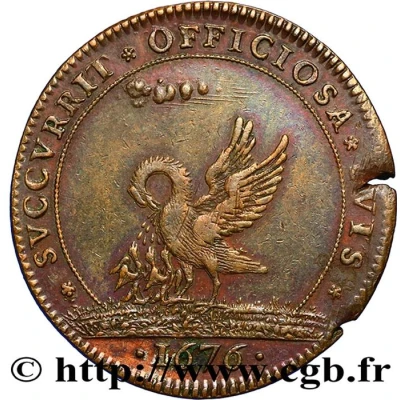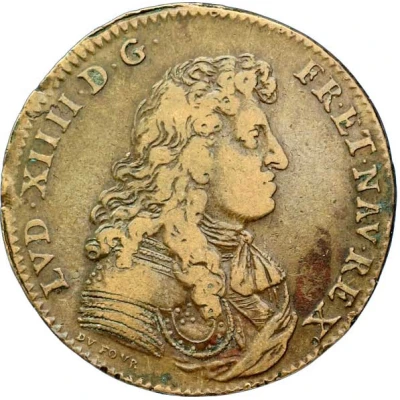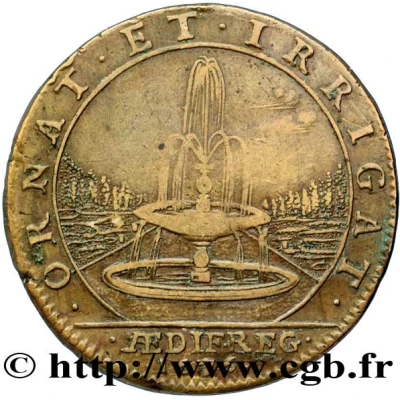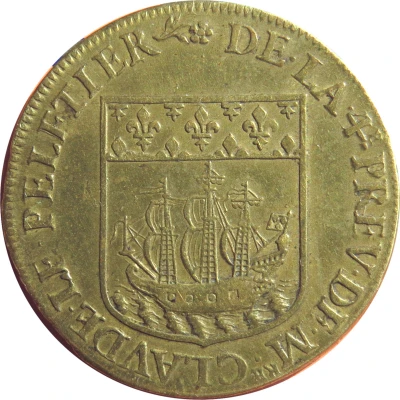


© CGB
Jeton - Louis XIV - États de Bourgogne - Suppression des francs-fiefs et nouveaux acquêts
1676 year| Copper | 6.98 g | 28 mm |
| Location | France |
|---|---|
| King | Louis XIV (1643-1715) |
| Type | Commemorative medals › Company, institution and association medals |
| Year | 1676 |
| Composition | Copper |
| Weight | 6.98 g |
| Diameter | 28 mm |
| Shape | Round |
| Orientation | Coin alignment ↑↓ |
| Updated | 2024-11-12 |
| Numista | N#336776 |
|---|---|
| Rarity index | 97% |
Reverse
A pelican on the left, sacrificing itself and piercing its own heart with its beak to feed its three young by feeding them its own entrails; date in exergue.
Script: Latin
Lettering:
✿ SVCCVRRIT ✿ OFFICIOSA ✿ SVIS ✿
• 1676 •
Unabridged legend: Succurrit officiosa suis.
Edge
Plain.
Comment
During this triennial period, a new type of token appeared which, although bearing the provincial coat of arms, should not be confused with triennial coins. They relate to francs-fiefs and nouveaux acquêts. Noble property could be acquired by commoners, in which case the transfer entailed heavy duties for the tax authorities. The resulting depreciation in the value of inheritances, combined with the inquisitorial demands of revenue clerks, gave rise to serious abuses and unheard-of vexations that even led to murder. The States of Burgundy had the chambre des francs-fiefs abolished, and the Elected obtained the right to deal directly with the king as good fathers. This was an act of devotion on their part, and they accepted no compensation for these exceptional functions. However, in recognition of such public service, the States offered each of them a hundred silver tokens and a number of specially minted copper tokens.Early Christians saw the pelican as a symbol of fatherly love taken to the extreme. In the past, it was taken for granted that the pelican was ready to sacrifice itself to feed its young by feeding them its own entrails.



